Croatia Registers 1,975 New Coronavirus Infections, 76 Deaths
ZAGREB, Dec 20, 2020 - Over the past 24 hours, Croatia has registered 1,975 new cases of the coronavirus infection and 76 deaths, the national COVID-19 crisis management team said on Sunday.
The number of active cases in Croatia today stands at 18,627, including 2,976 COVID patients in hospitals, 290 of whom are on ventilators.
Since February 25, when Croatia registered its first case of the infection, a total of 194,962 people have contracted the novel coronavirus, 3,177 of them have died, and 173,158 have recovered, including 3,390 in the last 24 hours.
There are currently 55,417 people in self-isolation.
To date, 950,611 people have been tested, 9,191 of whom over the past 24 hours.
Nenad Bakic: Why Has the Virus Become So Deadly in the New EU Countries?
December 20, 2020 – The European Union has so far recorded over 300,000 deaths caused by the coronavirus pandemic, with the second wave being 50 percent more deadly than the first one. It is easily possible that the total number will exceed half a million by the time the pandemic is brought under control. Mathematician, investor, and analyst Nenad Bakic explains why for Index.hr.
In terms of the number of deaths per million inhabitants, the new members of the European Union, the countries of the "new European Union", namely the former socialist countries – including, unfortunately, Croatia – are in the lead. Some of them have several tens of times more deaths in the second wave than in the first.
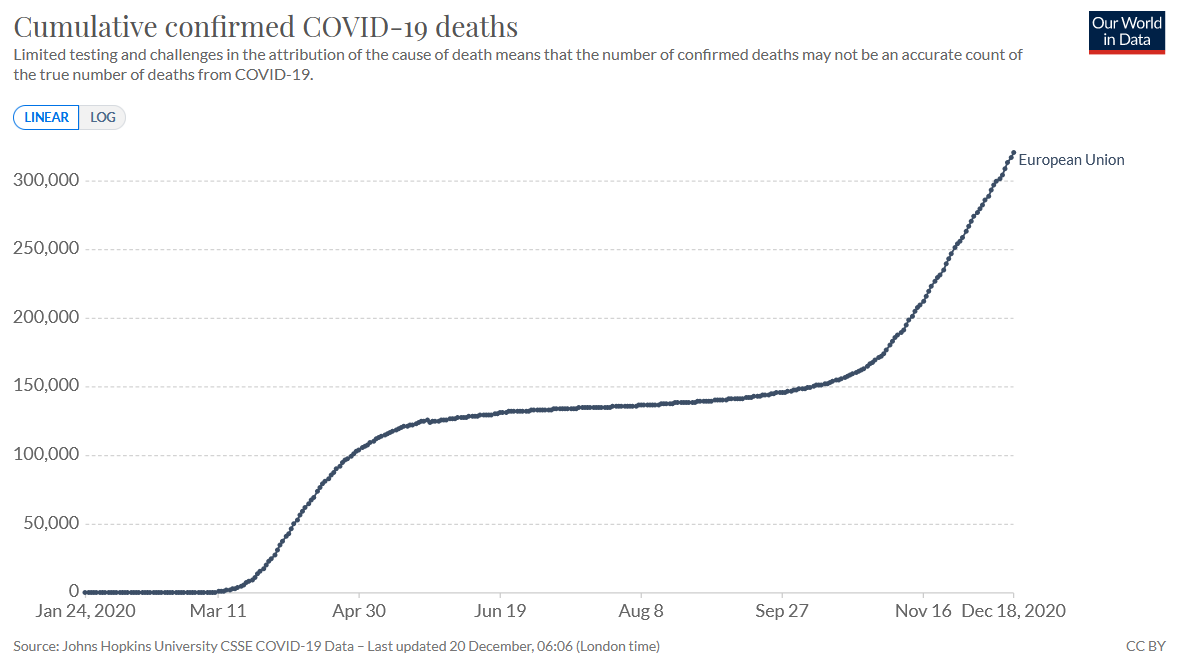
Confirmed cases of death due to coronavirus in the European Union / Source: ourworldindata.org
What is happening? Why did the virus in the second wave become so deadly in the new European Union members? By studying this example, we can learn a lot about the pandemic in general.
- The countries of the New European Union (NE), 11 ex-socialist countries, did very well in the first wave, with only one of them among the 13 most-affected. All the governments of these countries attributed the success to themselves. In some countries like Croatia, it was done by gurus who considered themselves ideologues of barbaric imprisonment or, as they ignorantly called it, "quarantine".

Graph 1. Coronavirus deaths per million, until June 30, 2020. Source: Index.hr / JHU CSSE
They are marked in red on the first graph. A lighter shade highlights the small Baltic countries because something strange is happening there, but it doesn't matter. It is the same when we look at it without this separation.
What is the probability that the NE countries were so much more successful in their will than the older, smarter, and more experienced brothers? Maybe it's something else.
- In the second wave, NE countries were significantly more affected, as we can see in the second graph.
Graph 2. Coronavirus deaths per million, from July 1, 2020 until December 18, 2020. Source: Index.hr / JHU CSSE
Out of the top 8 countries, they occupy seven positions. What is the probability that they are so much more unsuccessful than other countries by their own will? Very small.
Of course, it's easy to recognize a "return to the core value" here – as the virus does what it wants, most countries end up converging to a similar number of deaths. Graph 3 shows the coefficient of variation, which is the standard measure of a set's scatter.
Graph 3. Coefficient of variation, deaths from coronavirus in EU countries per million. Source: Index.hr
Here we can already conclude that the performance of the NE countries as a group has nothing to do with their governments' competencies. The probability that a group with its ability is far above average and then that same group is far below average, especially in a situation like this where the virus spreads across the continent without knowing the boundaries, is zero. Of course, some individual countries are better or worse, both in epidemic management and in treatment.
- But things are only now becoming very interesting. The number of deaths in the second wave not only offset the one from the first wave but also shifted it. The NE countries as a group are now considerably worse than the rest, as we can see in Graph 4.
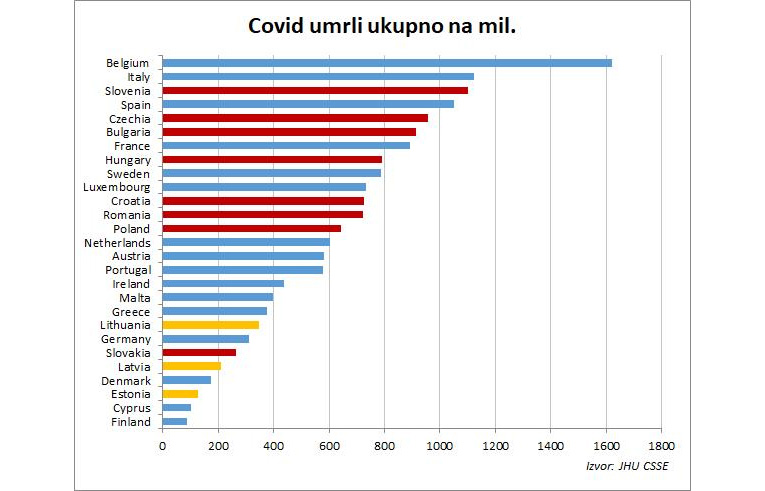
Graph 4. Total coronavirus deaths per million. Source: Index.hr / JHU CSSE
They occupy eight of the first 13 places. If we exclude the small Baltic countries, only Slovakia remains in the lower half, but the situation deteriorates quickly, and it could easily get to the upper half.
As we can see, there is something special about the small Baltic countries and Finland. We still don't know what, and it doesn't matter for this analysis either. If we single out those countries, things become clearer, but the analysis works without them.
- What is the explanation? It can be the following:
- A. It has been shown that COVID-19 is highly seasonal. In NE countries, the epidemic came later in late winter 2020 and therefore could have done much less damage by the time spring came. This is undoubtedly the case with Croatia, as you can see in Graph 5: the reproductive factor R fell below 1 already before the end of March, before the measures were introduced on March 23 in Croatia and could take effect.

Graph 5. Source: Index.hr
The introduction of a movement prohibition and a drop in R below 1 are marked with a red and green line. An international group of the London School of Health and Tropical Medicine made this calculation, in which a member of the Croatian Scientific Council also participated. Somehow they later forgot to let us know that R had already fallen below 1 even then. However, at the beginning of the epidemic, everything was explained with its help, which advanced countries are doing now. From a time perspective, all of this is now obvious, and that first wave seems completely benign compared to this one now.
But let's remember the psychosis in which we lived then when the concept of "Camp Croatia" with GPS tracking and leaving the house every third or fifth day was already announced when the epidemic was already falling. Inexperienced and impressed by the violent measures, we thought they helped.
But why did the epidemic come later? Here I think the key is in international connectivity. I used an imperfect DHL connectivity index and got a great explanation of the difference, which can be seen in the following chart.

Graph 6. Source: Index.hr
Interestingly, even such an imperfect measure of connectivity explains so much of the variation. As we know, the most affected countries are also the most connected: Italy – densely populated Lombardy and workers from China; Italy, France, Spain – tourism; Belgium – the center of the European Union and others; Sweden – far more connected than its neighbors; and a million Swedes went on school holidays abroad in the last week of February.
- B. The first wave was actually far stronger than it seems now because we tested and hunted cases much less. Many countries found that their dark number (undiscovered cases) was several tens of times higher than those found. In our country, depending on the interpretation of the data, 50 to 80 times, in Denmark 80 (at some point). Now the dark number is probably 5 to 10 in most countries, and the current maybe even just 3 because as more and more people are being tested, and more and more people have been exposed to the virus, the significant dark number has nowhere to hide.
Therefore, most of the countries of old Europe became infected in the spring, a part of the population gained immunity, and significantly more than in the NE, which we cannot see well if we look only at the cases.
- C. It is now quite clear that strongly seasonal is not only an epidemic of SARS-CoV-2 virus but also COVID-19 disease. Clinical pictures are, on average, far more difficult now than a month or two ago. Mortality rates in most EU countries have doubled in just a month or two, meaning twice as many people die among those confirmed infected. It is also the insight of an international group of scientists in which Croatians Gordan Lauc, Alemka Markotić, Dragan Primorac, and others also participated. At first, it was controversial, but now it is generally accepted. Those infected in spring (more in the old than in the NE) had a much better chance of surviving.
- D. One explanation indeed lies in the quality of hospital systems. I believe richer countries have more resources. For example, expensive HFOT devices save lives better than respirators (Croatia has now procured a larger quantity).
- E. Other variables could be considered, such as previous flu seasons, the percentage in the population over 80, or the people in nursing homes. Still, I believe they would indicate a lower expected number of deaths in the NE (but I did not check the data).
In general, the NE countries, including Croatia, were not particularly unprepared for the supposedly expected strong second wave. Let's look at how strength and early outbreak surprised even the most advanced countries, with entirely different strategies: from Germany through Denmark and the Netherlands to Sweden. Remember that in almost all countries, politicians said "let's just wear masks, and we won't need any special measures," then "let's introduce some measures, and we certainly won't need lockdown," and so on. Now we have reached a solid lockdown in almost the entire Union.
Even Germany, the first wave model, is experiencing a real drama after a failed soft lockdown that was supposed to ensure a peaceful Christmas. Denmark and some other countries are already overtaking us in terms of the number of infected. It is not impossible for Germany to overtake us, even in terms of deaths.
In some countries, a third or "second B" wave is already being born, under the influence of winter COVID-19. R is contextual, and even if it falls below 1, under the influence of various circumstances, it can return over 1. It seems that our second wave peak was delayed by merging with that (surprising to all) the third wave.
Conclusion
- The development of the epidemic is mostly beyond the reach of the authorities.
- Countries with stronger measures do not fare better than those with weaker ones. For example, Slovenia is the worst in this group, despite introducing extreme measures before the epidemic escalated.
- The introduced travel ban is not useful. The inspiration for it was the spring ban, which was considered our most important measure, and obviously did not affect the epidemic.
- On the whole, we are not somewhat more unsuccessful than others. Indeed, although some have had significantly stronger measures for longer (this is one group we can compare ourselves to, and the other is our neighborhood shown in Graph 7, and only Serbia is better than us), we should consider any success or failure relatively. It is known that some measures work, such as banning gathering, maintaining physical distance, washing hands, ventilation, etc. The introduction of measures should be proportionate to the goal because the disproportionate introduction of measures has severe negative consequences for society. Countries that introduce brutal and unnecessary measures (there are arguments that some brutal measures even encourage an epidemic) can also cause significant collateral damage to their populations' lives and health.

Graph 7. Showing data from October 6, 2020 to December 19, 2020. Source: ourworldindata.org
Let's not forget, the goal in epidemic control is to bring the reproductive factor R below 1, and "zero-covid" strategies have long since been abandoned. Fortunately, in Croatia, R is currently significantly below 1. Let's hope that the data on the epidemic we have are credible and that such a situation will persist.
Of course, the main goal is to save as many lives as possible, although we are often helpless with the virus. Therefore, it is necessary to adhere to epidemiological measures with enhanced protection of vulnerable groups.
To read more about coronavirus in Croatia, read TCN's dedicated page.
Fourth Split Gastroadvent at Kadena Puts Vaccinations, Hvar, and Mediterranean Diet in Focus
December 20, 2020 - The fourth Split Gastroadvent was held at seaside restaurant Kadena, with the importance of vaccines, the Mediterranean diet, and the island of Hvar in focus.
TV journalists were honored as the candle of love was lit on the fourth Gastroadvent Sunday, with representatives of tourist boards and Split-Dalmatia County.

Olja Martinic opened the fourth Gastroadvent Sunday to emphasize the importance of vaccines.
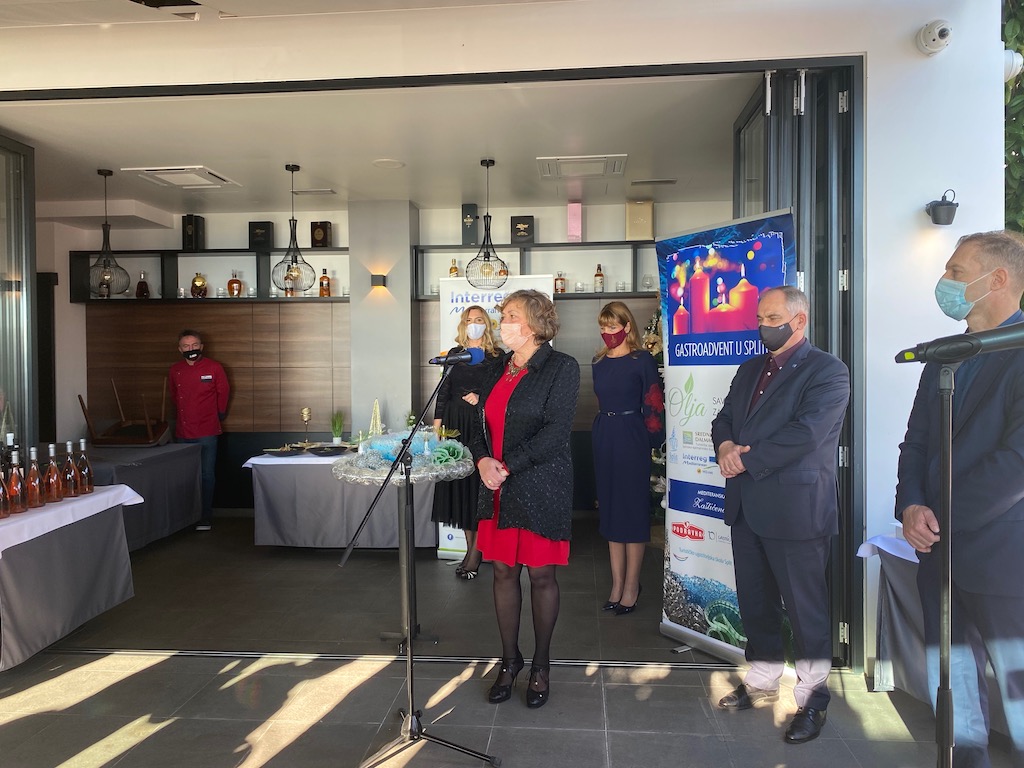
"A vaccine has no alternative and is most important in fighting viral infections. A quality lifestyle is of great importance. The human body needs macro and micronutrients daily, so it is crucial to take them in, ensuring daily activities and a good immune response to many challenges. A moderate Mediterranean diet ensures perfect synergy and optimal intake of nutrients that we store in our body. We have plenty of fruits, vegetables, and perfect traditional recipes at our disposal," said Martinic.
Fish products are a good source of zinc (Zn), micronutrients of great importance, which has a beneficial effect on the metabolism of macronutrients and carbohydrates, and protein synthesis. The role of Zn in the protection of cells from oxidative stress and the normal function of the immune system is significant. It is essential to consume enough fish, oysters, oysters, crabs, tuna, shellfish.
As 2020 marks the jubilee 10th anniversary of recognizing the Mediterranean diet, this year's theme pays great attention to the sea. The Mediterranean Sea boasts about 2.5 million km² and connects all countries of the original Mediterranean diet.
Following this theme, this year's Gastroadvent wreath is also dedicated to the sea and its preservation. The seafoam wreath symbolically and literally simulates the sea world and is created from discarded trash and plastic. The Mediterranean diet theme inspired prominent sculptor Nives Čičin Šain to send a message artistically: “Let's preserve our sea and the life in it that feeds many with its beauty."
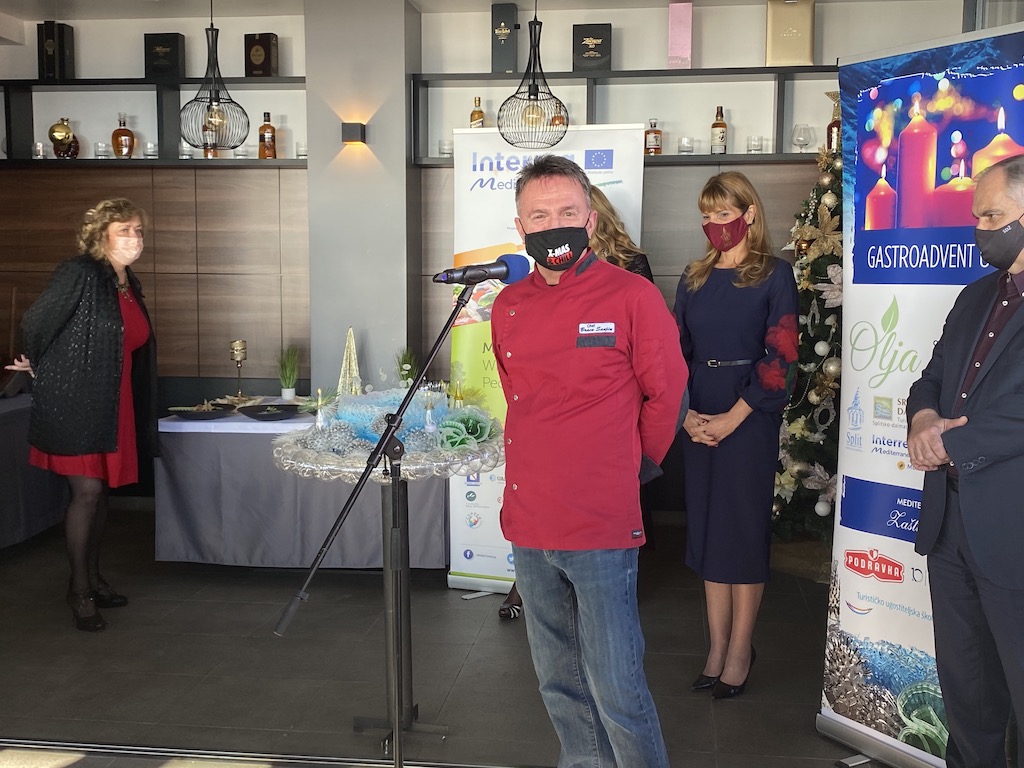
The Kadena restaurant chef, the highly respected Braco Sanjin, prepared a stunning selection of plates from various types of seasonal small fish provided by the Gastro Ribarnica Brac fish market.

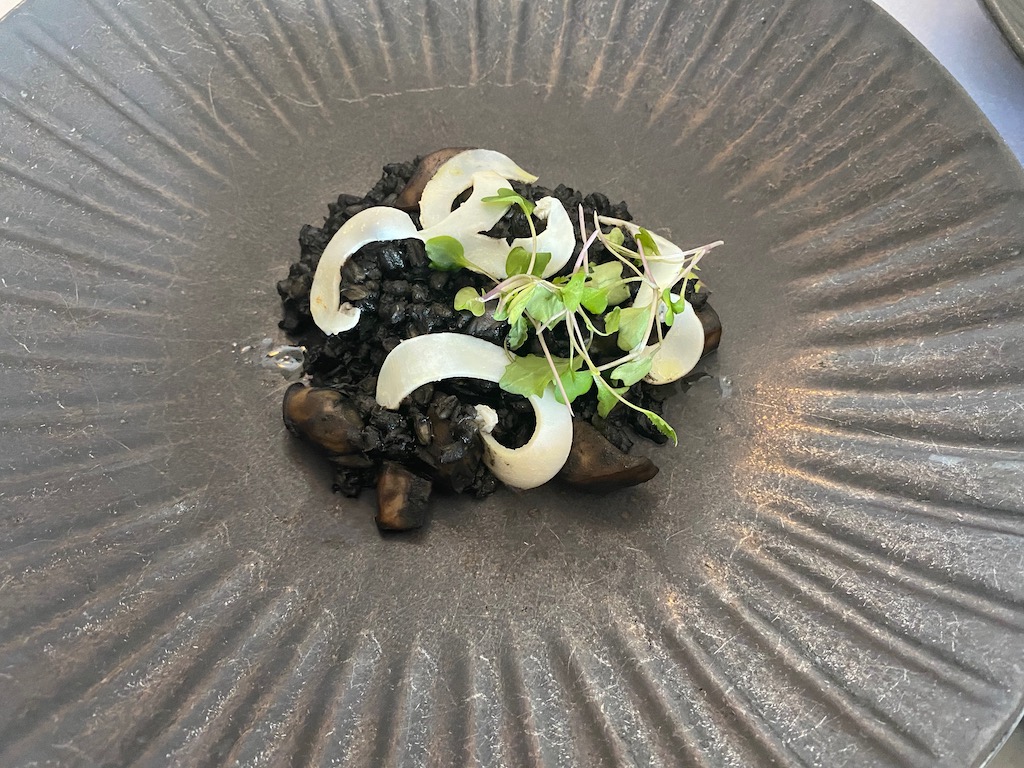


Mario Jeličić Purko presented Hvar Hills winery, which is owned by his family. Hvar Hills manages a 30-hectare vineyard on the southern slopes of the island of Hvar, which is also one of the largest island vineyards in the Mediterranean. They presented four wines: Bogdanuša, an indigenous white variety of the island of Hvar, Pošip as the most important Dalmatian white variety, delicate Provencal Rosé Pius, which is a blend of several varieties, and Plavac mali Maior Rizerva from 2016, which recently won bronze at the Decanter competition in London.
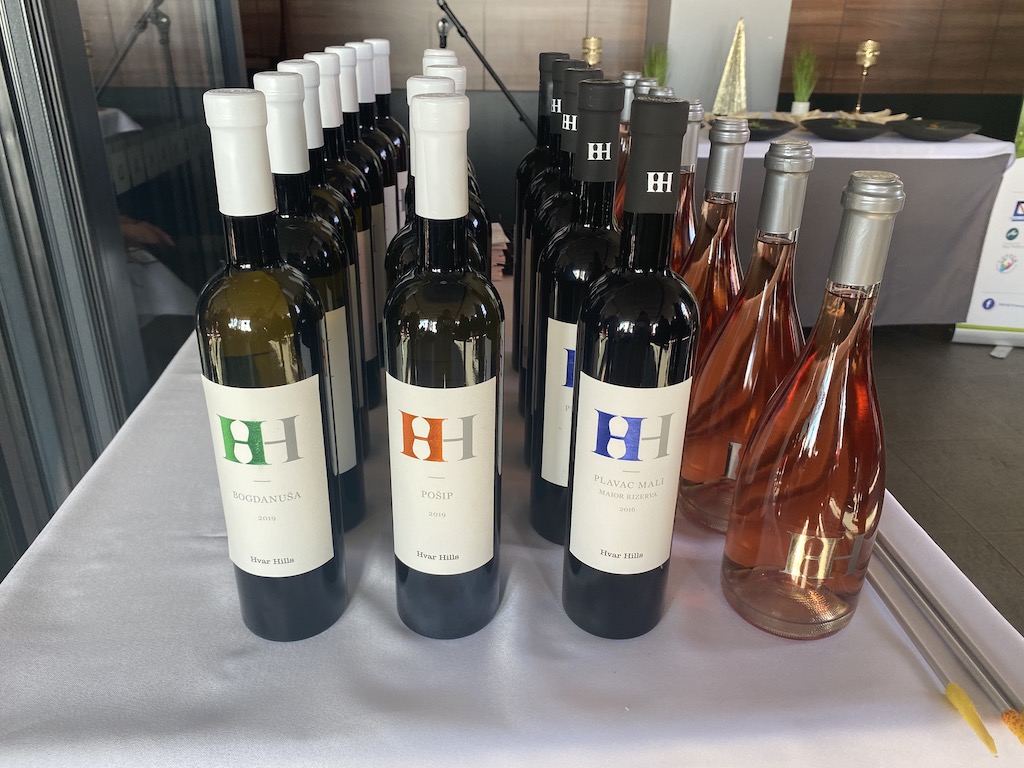
The fish of the Adriatic Sea was presented by partner Gastro Ribarnica Brač, which makes fish more accessible through regular campaigns, and with its professionalism, guarantee safety, availability, and originality. The Amare brand, which focuses on "love from the sea," combines hand-cleaned meat of Adriatic shrimp, which is synonymous with quality and an indispensable food for restaurants and households, as well as marinated shrimp, marinated anchovies, and salted anchovies. Their novelty is the first burgers made of Adriatic shrimp and scampi, which have achieved notable success on the market. On the wings of this success, the idea for a burger made of Adriatic fish was created, more precisely, of four types of white fish and two types of bluefish. Along with domestic fish during the holiday season, at Centaurus d.o.o., you can get an excellent "Premium" cod (Bakalar).
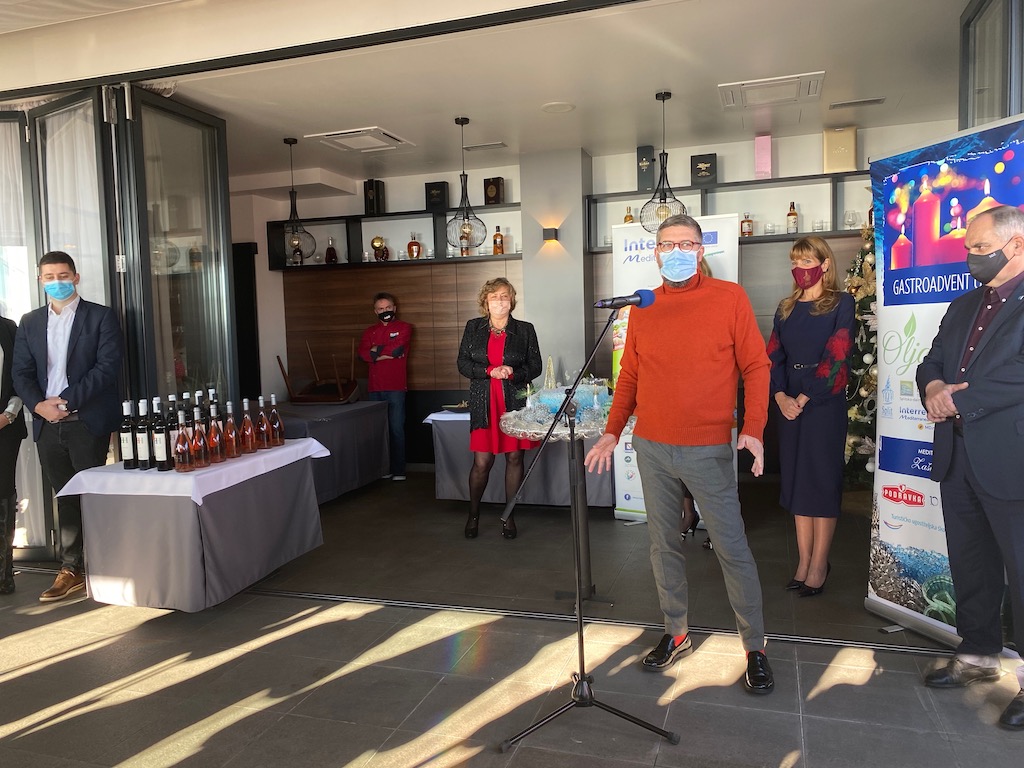
Ecology and competence in gastronomy and tourism are the future projects of the Split School of Tourism and Hospitality. Under the leadership of director Ivo Bilić, the School of Tourism and Hospitality Management Split has been appointed the Regional Center of Competence in Tourism in the summer of 2018.
The regional center of competence in the tourism and hospitality sector is the name of a long-term project of the Tourist Catering School Split and partners.
The idea of creating a Regional Competence Center (hereinafter: RCC) arose as a need to improve human resources in tourism, and this school has been in development for about 10 years. Seven years ago, a model of the center was presented at the Ministry of Tourism, originally an idea for developing quality schools in tourism. The initial model was for Split-Dalmatia County with about 15 schools (mostly in Croatia) that educate for at least one of the occupations in the tourism and hospitality sector (there are about 100 schools in Croatia). The main goal was (and remains) that students have better exit competencies upon completing education and uniform in all schools. The important role of the RCC is to connect with the local community, and it will be manifested through two goals:
1) Projects with kindergartens and primary schools in creating habits among young people and encouraging reflection on tourism, and on the other hand as promoting our professions,
2) Participation in local (regional) events, creating habits among the population about the benefits and importance of caring for the guest-tourist.
This year's Gastroadvent also features Mediterranean Food - MD.net, a project funded by the European program Interreg Mediterranean, worth 3.7 million EUR, and implemented by the Public Institution RERA S.D. for the coordination and development of Split-Dalmatia County. The project involves 14 project partners from 9 countries in the Mediterranean, aiming to popularize the Mediterranean diet. The main goal of the project is to strengthen research in this area following the UNESCO Convention on Mediterranean Nutrition, to raise the quality of food and life in 9 project partner countries, as well as promote the Mediterranean diet, which is recognized as the gold standard of proper nutrition, as well as its far-reaching beneficial effects on health.
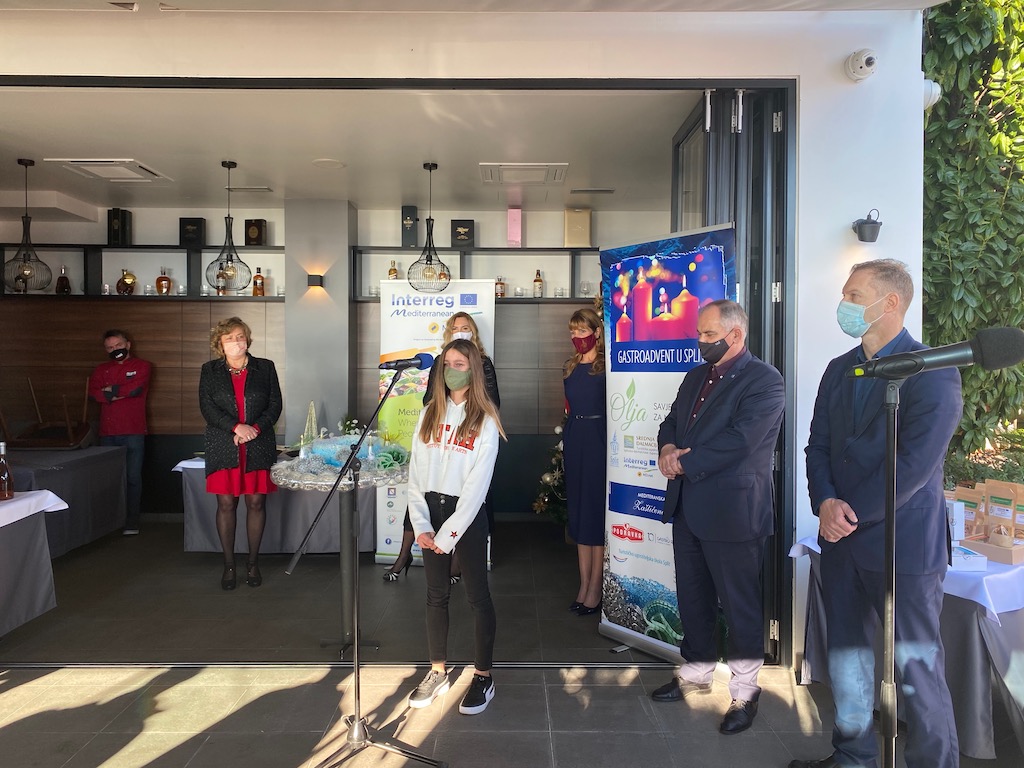
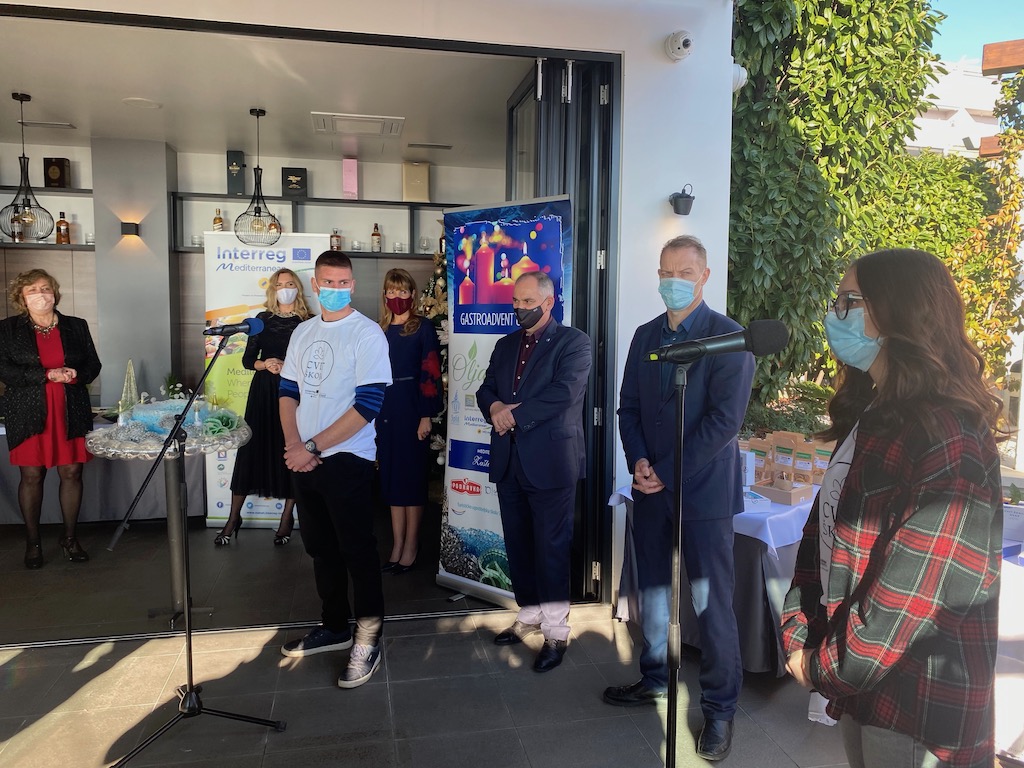
This time, the Hvar High School and Petar Hektorović Elementary School in Stari Grad presented their products: sea salt infused with Plavac Mali and citrus zest, and traditional honey and black pepper biscuits 'paprenjak'.

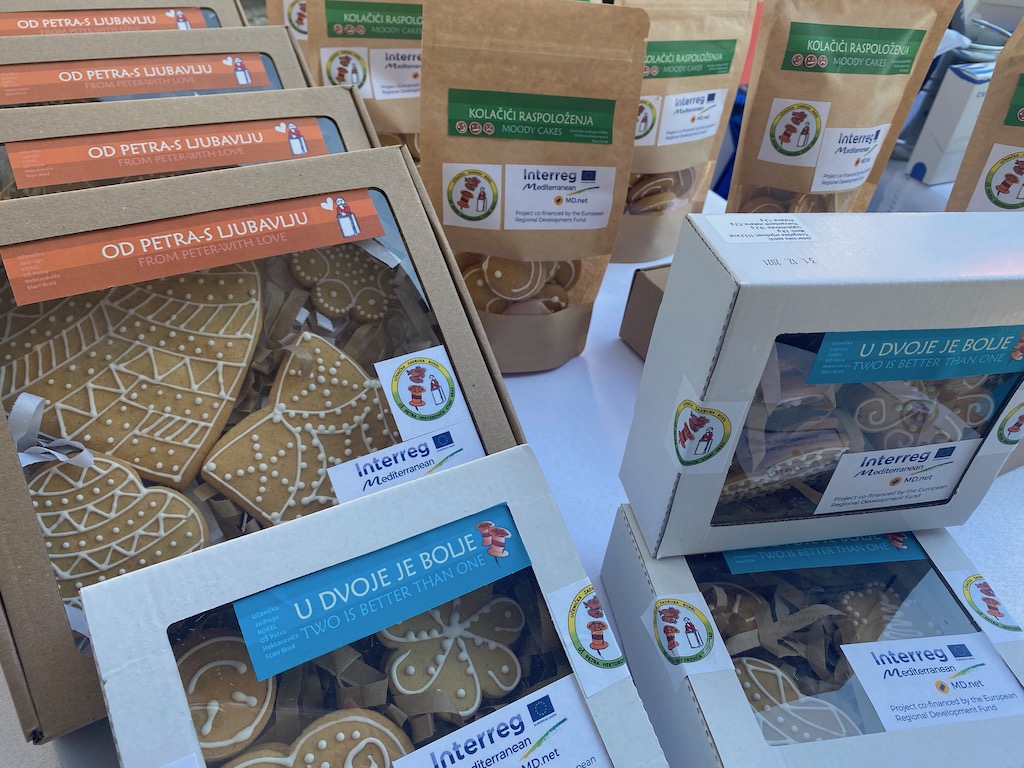
All products presented at Gastroadvent were evaluated, and the winner will compete at an international competition in Seville, Spain, next year. Split-Dalmatia County prefect Blazenko Boban announced High school "Brac" in Supetar with their 'varenik' tomato sauce as the winner!
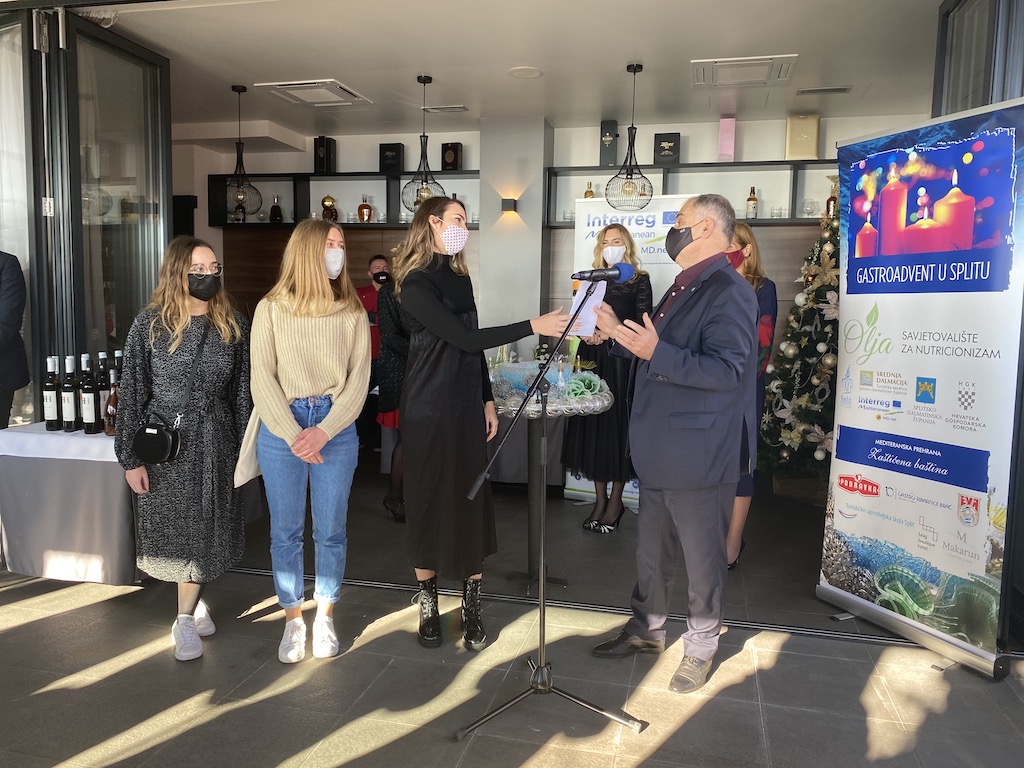
Split Gastroadvent is held every Advent Sunday at a new location, honoring a different group of journalists.
To read more about lifestyle in Croatia, follow TCN's dedicated page.
PHOTOS: Epic Croatia Weather Photography Stuns The World
December 20, 2020 – The 13 winners of the incredibly popular World Meteorological Organization annual competition have just been announced, and two fine pieces of Croatia weather photography are among them. These spectacular images of Croatia weather photography show all 9 Croatian photographs which reached the final in 2020 and all 10 Croatian finalists who similarly stunned the global audience in 2019
Croatia weather photography: the two newly announced winners from the 2020 competition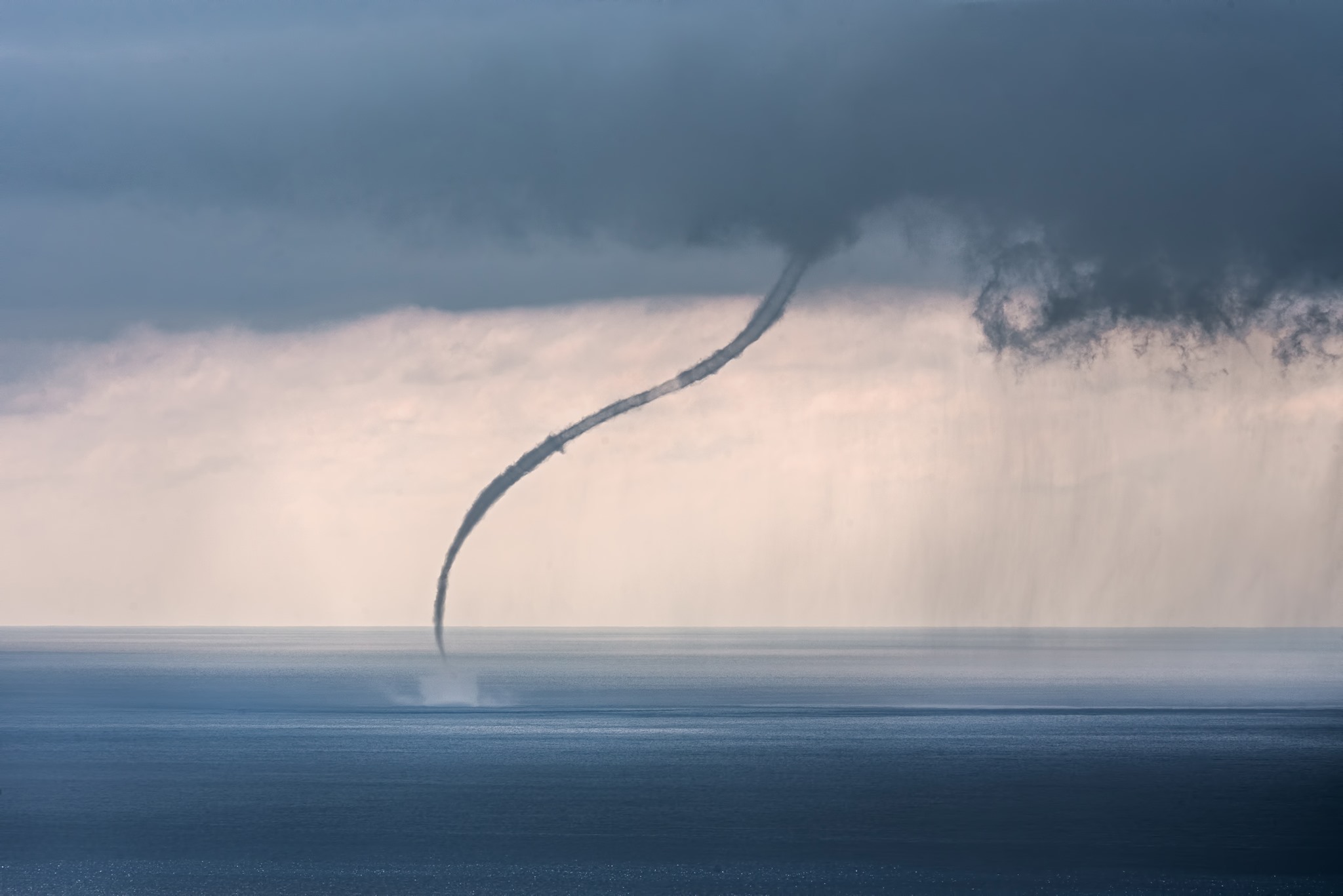 Photographer: Sandro Puncet Photo taken: Losinj island
Photographer: Sandro Puncet Photo taken: Losinj island Photographer: Zrinka Balabanic Photo taken: Pag island
Photographer: Zrinka Balabanic Photo taken: Pag island
Thanks to its popularity as a tourist destination, lots of people are now used to seeing beautiful photos of Croatia. Although, the images they usually see are of idyllic beaches, cloudless skies, stunning nature and turquoise blue seas. But, as anyone who knows the country will tell you - and as these photos show - Croatia isn't always like that.
Croatia weather photography: the two newly announced runners-up from the 2020 competition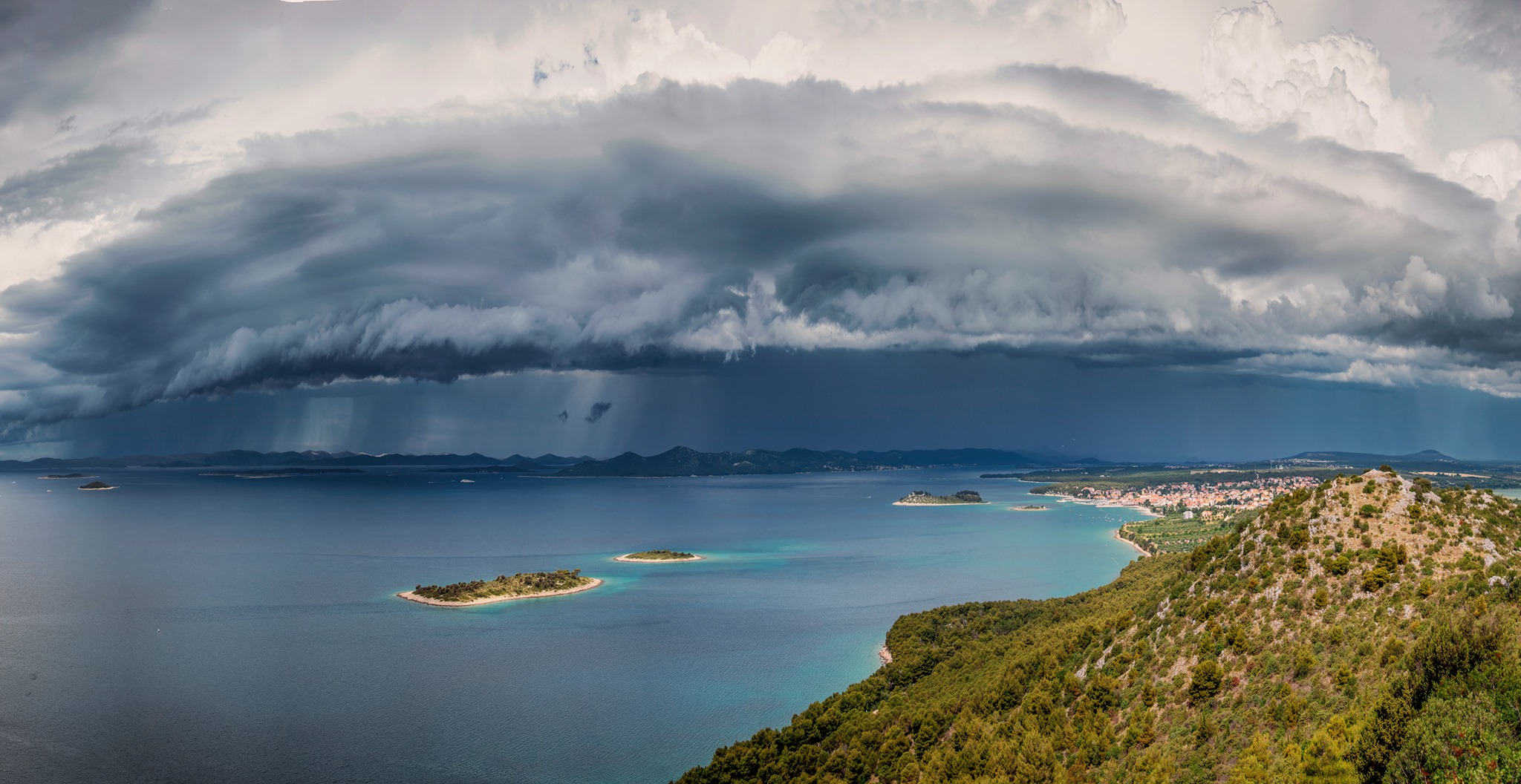 Photographer: Šime Barešić Photo taken: Drage, Pakostane
Photographer: Šime Barešić Photo taken: Drage, Pakostane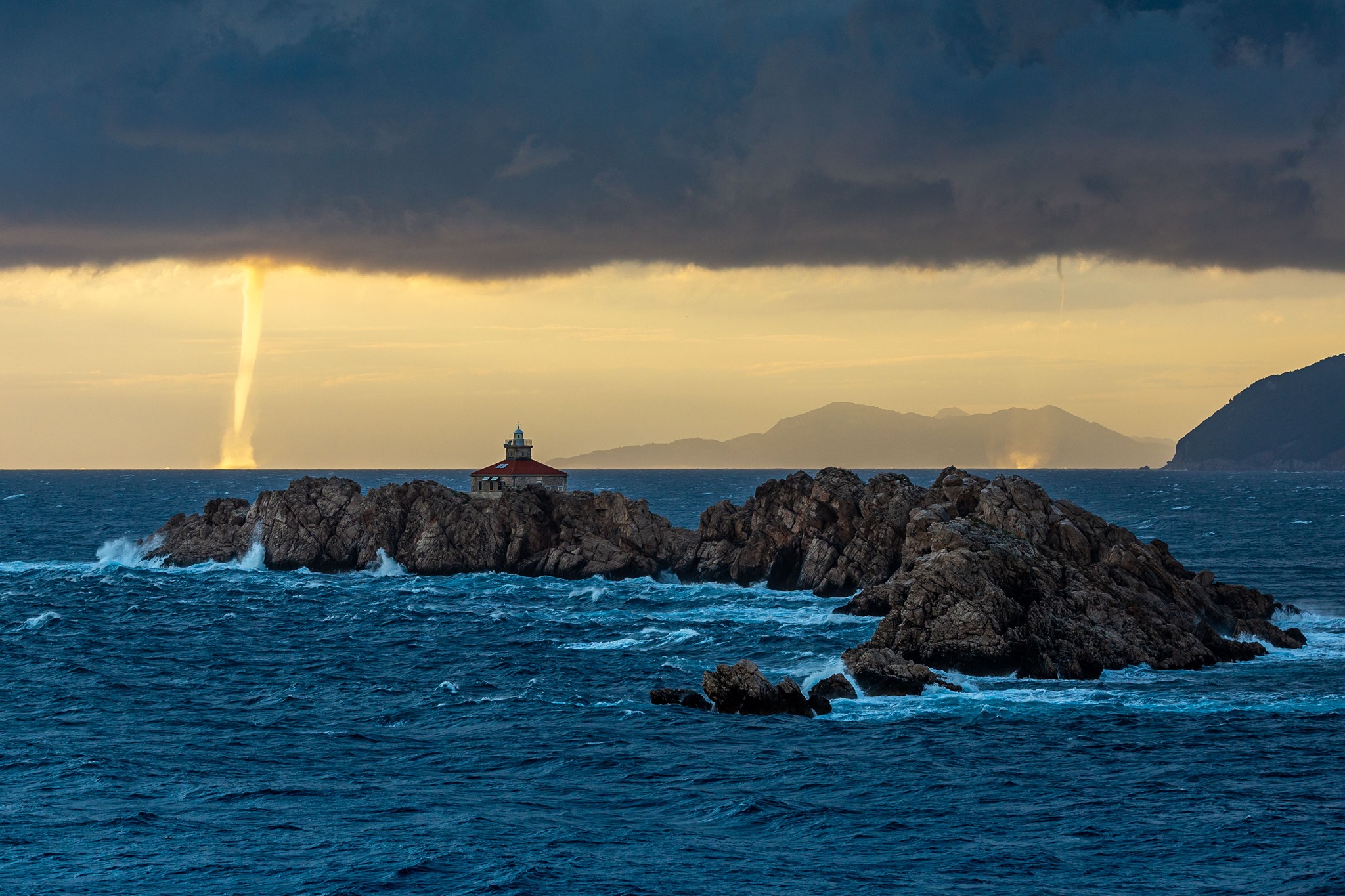 Photographer: Mislav Bilic Photo taken: Lapad Peninsula, Dubrovnik
Photographer: Mislav Bilic Photo taken: Lapad Peninsula, Dubrovnik
Out of season, Croatia can experience vastly different weather conditions to those advertised in travel brochures and blogs. And, whenever there's a spectacular weather occurrence, usually there's a photographer out there, braving the elements, trying to capture it.
Over recent years, some of the best Croatia weather photography has featured in the annual competition organised by the World Meteorological Organization. 2020 has been no different.
The other five Croatian finalists from the 2020 competition Photographer: Šime Barešić Photo taken: Drage, Pakostane
Photographer: Šime Barešić Photo taken: Drage, Pakostane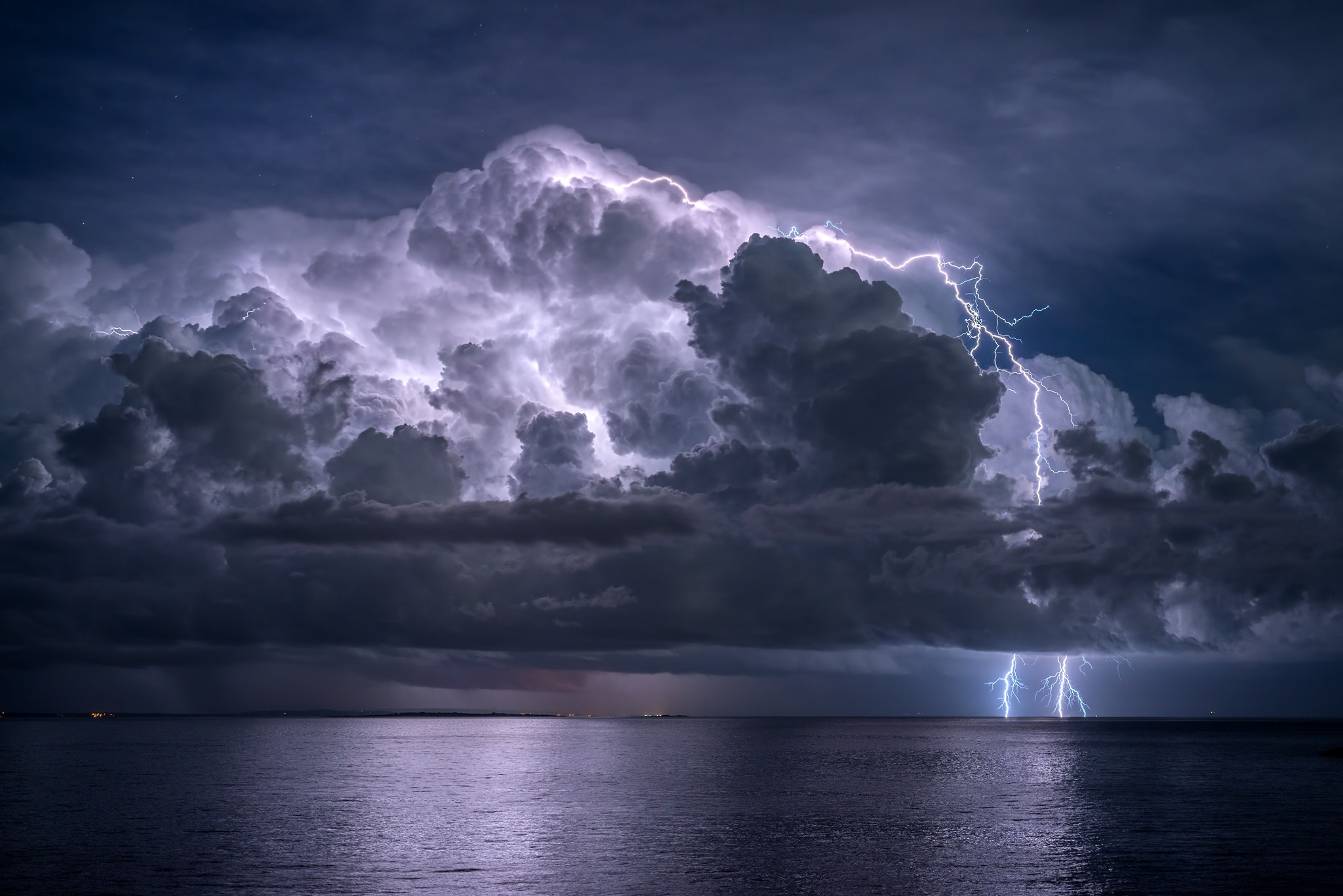 Photographer: Sandro Puncet Photo taken: Losinj island
Photographer: Sandro Puncet Photo taken: Losinj island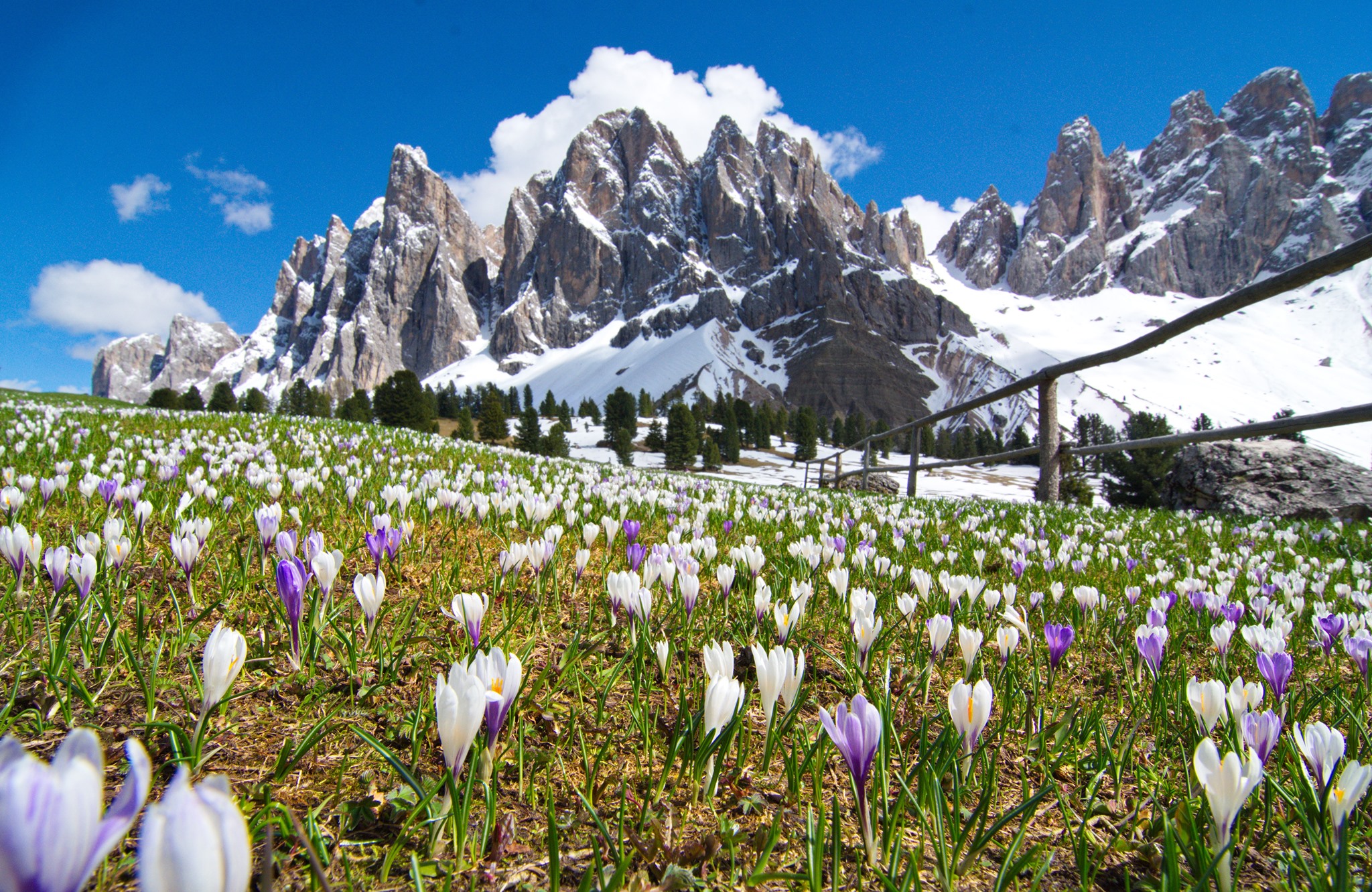 Photographer: Zoran Stanko Photo taken: Geisler Alm, Dolomites, Italy
Photographer: Zoran Stanko Photo taken: Geisler Alm, Dolomites, Italy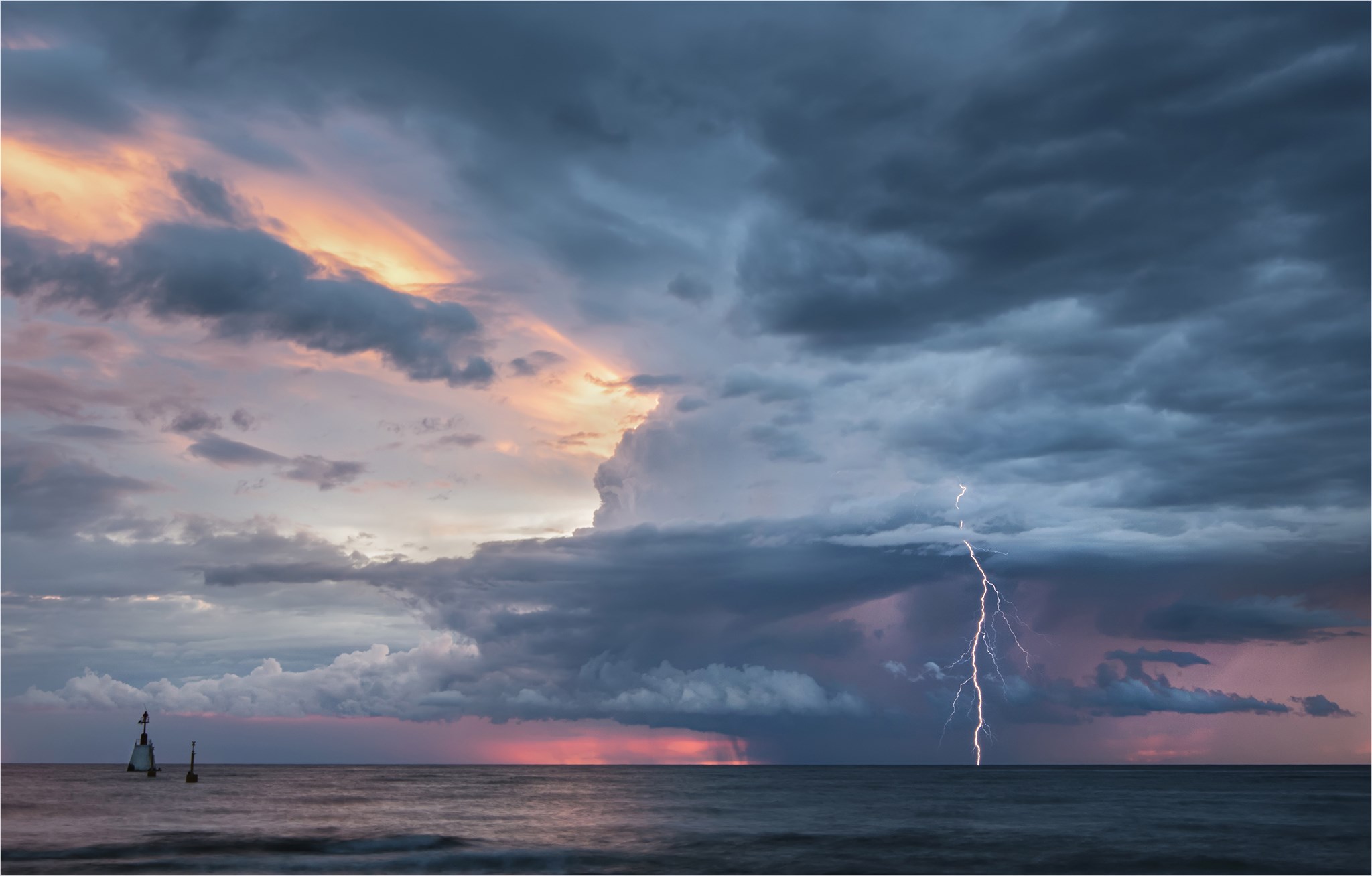 Photographer: Maja Kraljik Photo taken: Umag, Istria
Photographer: Maja Kraljik Photo taken: Umag, Istria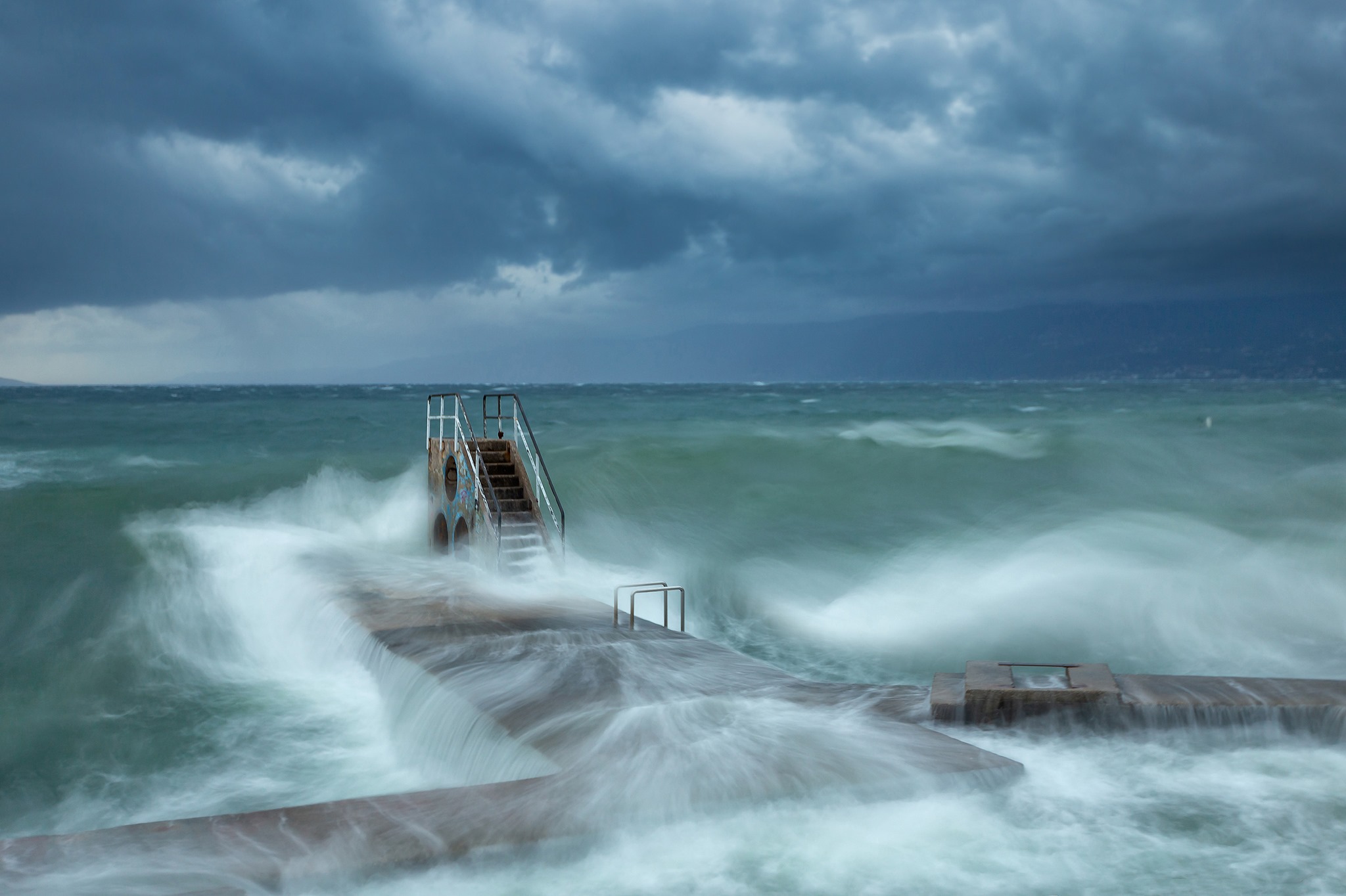 Photographer: Igor Popovic Photo taken: Rijeka
Photographer: Igor Popovic Photo taken: Rijeka
The winners of this year's competition have just been announced and the two fantastic examples of Croatia weather photography within the top 13 will take their place in the 2021 World Meteorological Organization calendar.
The 10 Croatian finalists from the 2019 competition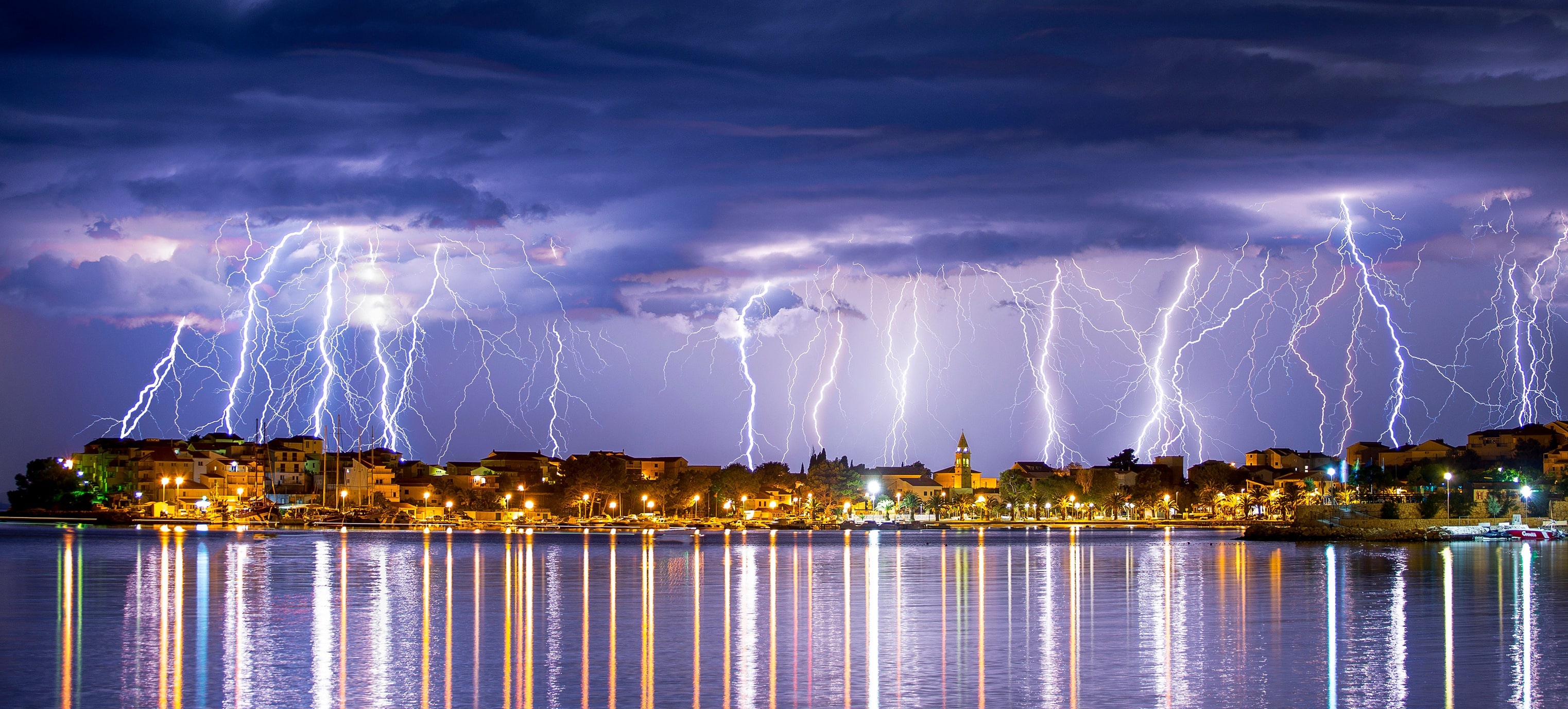 Photographer: Danica Sičič Photo taken: Srobreč, Dalmatia
Photographer: Danica Sičič Photo taken: Srobreč, Dalmatia Photographer: Romeo Ibrišević Photo taken: Plitvice Lakes National Park
Photographer: Romeo Ibrišević Photo taken: Plitvice Lakes National Park Photographer: Božan Štambuk Photo taken: Bundek park, Zagreb
Photographer: Božan Štambuk Photo taken: Bundek park, Zagreb Photographer: Miroslava Novak Photo taken: Pribislavec, Međimurje
Photographer: Miroslava Novak Photo taken: Pribislavec, Međimurje
As well as the two winners, two further examples of Croatia weather photography came in the runner-up category, of which there were 12 in total.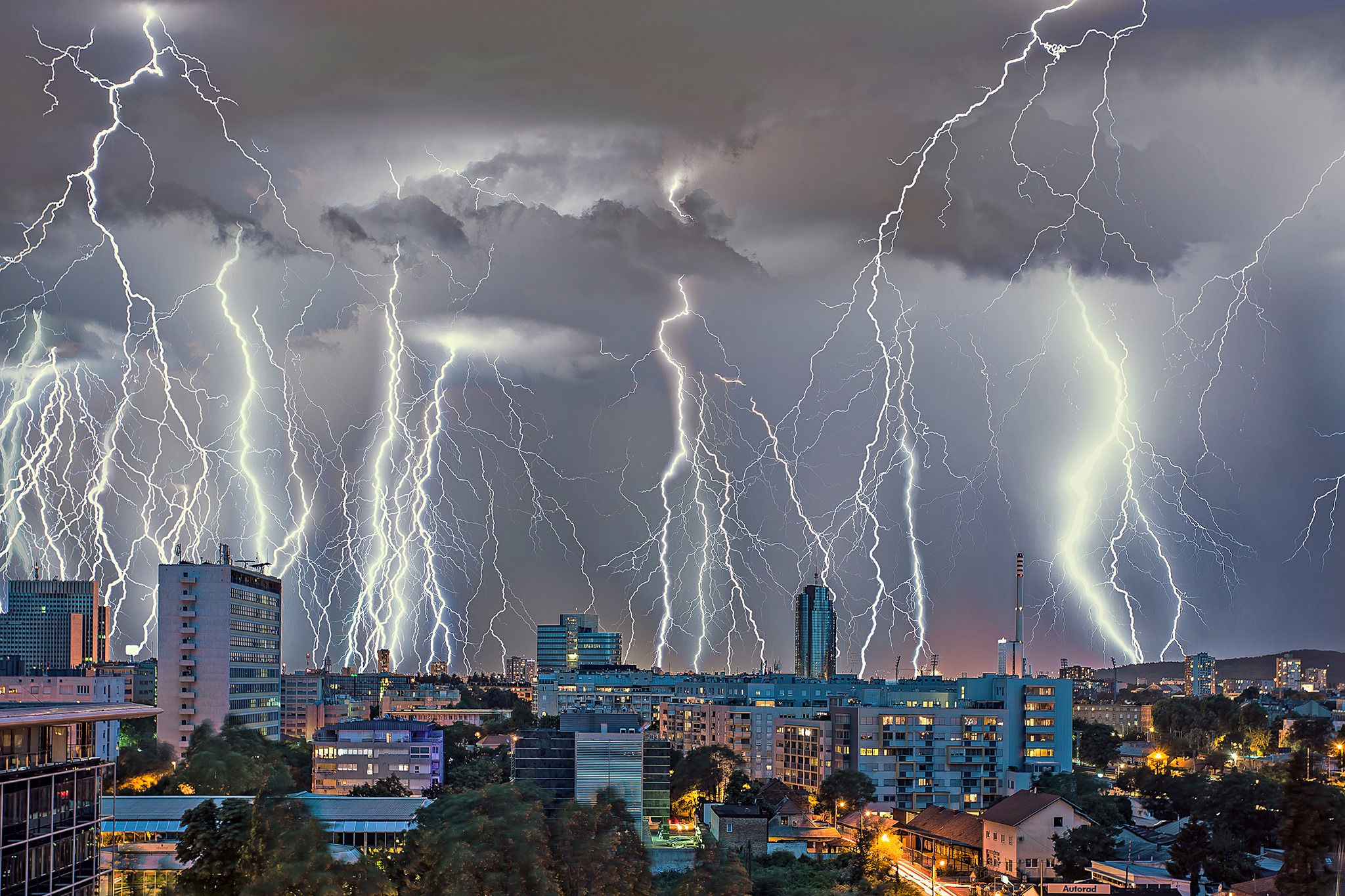 Photographer: Francesca Delbianco Photo taken: Zagreb
Photographer: Francesca Delbianco Photo taken: Zagreb Photographer: Ivica Brlić Photo taken: Sava river, Davor, near Slavonski Brod
Photographer: Ivica Brlić Photo taken: Sava river, Davor, near Slavonski Brod Photographer: Nataša Šafar Photo taken: Rečica, near Karlovac
Photographer: Nataša Šafar Photo taken: Rečica, near Karlovac Photographer: Romeo Ibrišević Photo taken: Plitvice Lakes National Park
Photographer: Romeo Ibrišević Photo taken: Plitvice Lakes National Park
Over 1000 photographs from all over the world were entered in the 2020 competition. The submissions were narrowed down to a final selection of 70 contenders. As TCN reported back at the start of October, no less than 9 examples of Croatia weather photography made it into the final 70, taken by 7 Croatian photographers. Photographer: Danijel Palčić Photo taken: Pag island
Photographer: Danijel Palčić Photo taken: Pag island Photographer: Aleksandar Gospic Photo taken: Ražanac
Photographer: Aleksandar Gospic Photo taken: Ražanac
Croatia regularly punches well above its weight in the annual competition, as we can see from these 10 examples of incredible Croatia weather photography that were among the finalists in 2019.
All images courtesy World Meteorological Organisation
ICT Sector in Croatia Continues to Grow Despite COVID-19 Pandemic
December 20, 2020 - The impact of the COVID-19 crisis has brought many activities worldwide to their knees, but the ICT sector in Croatia has experienced growth.
Index.hr reports that this is a conclusion derived from data from European and national statistics and HUP's Association of Information and Communication Activities (HUP-ICT). According to these data, the ICT sector has in many respects already surpassed the traditionally strong industries in Croatia, such as food and metal processing, and the importance of this sector is getting closer to tourism, especially in this "corona year," where tourist traffic is significantly reduced compared to previous years.
Data from HUP's ICT associations, for example, show that the ICT sector already exceeded the food and metal industry in Croatia in terms of revenue and exports last year. Namely, the total revenues of companies from the ICT sector last year reached HRKK 41.1 billion. In contrast, the food industry's revenues amounted to HRK 36.6 billion, and the metal industry HRK 19.5 billion. Exports of the ICT sector in 2019 were worth around HRK 9.6 billion, while exports of the food industry, according to HUP-ICT data, amounted to HRK 6.4 billion, and the metal industry HRK 9.1 billion.
But what the ICT sector is at the forefront of is certainly the added value, which is significantly lower in other industries than in ICT. Thus, value-added in the ICT sector last year amounted to around HRK 17.9 billion. The food industry amounted to HRK 8.6 billion, and the metal industry to HRK 7.8 billion.
Employment in the ICT sector has also increased significantly in recent years. In 2016, the sector employed 33,181 workers, and by the end of last year, the number of employees had grown to 41,437. According to HUP-ICT data, 45,926 workers worked in the food industry last year, which is slightly more than in the ICT sector, and 37,848 in the metal industry, significantly less than in ICT. Estimates say that the ICT sector in Croatia in 2025 should employ about 55,000 workers.
The growth trend of that sector has continued this year as well. HUP-ICT Vice President Hrvoje Balen says that the number of employees in the ICT sector is expected to increase by three to five percent this year, which means that around 2,000 new jobs will be created in the corona crisis in the high-tech sector in Croatia.
"The ICT sector in Croatia is growing from year to year. The corona crisis has certainly stimulated the growth of this sector because a lot of things in life and work have moved online," Balen said.
The growth of the ICT sector in the corona crisis - or, more precisely, its telecommunications part - is also shown by new Eurostat data. Eurostatists point out that coronavirus protection measures have boosted employment in the telecommunications sector. Their data for the first and second quarters of this year show that the number of telecommunications employees in the EU rose from just over 822,000 at the end of last year to over 1.04 million in the middle of this year. The number of employees in telecommunications in the EU increased strongly in the first two quarters of this year, conclude Eurostat.
According to Eurostat data, Croatia also recorded a significant increase in the number of telecommunications employees this year. Namely, Eurostat data show that the number of employees in Croatia's telecommunications sector at the end of the first half of this year amounted to 13,800. In contrast, at the end of last year, 12,400 workers worked in this activity. According to Eurostat statistics, tremendous growth was recorded in the second quarter, a good part of which we spent in lockdown like most of the EU.
Balen points out that the data on the number of employees in telecommunications available to HUP-ICT are somewhat more modest than those presented by Eurostat. Therefore, the question of coverage can be asked, i.e., when all Eurostat statisticians count as employees in the telecommunications sector. Here, however, it should be emphasized that a good part of the ICT sector employees, including telecommunications, are self-employed or work on student or some other looser contracts. However, the growth trend in the number of employees in telecommunications says Balen, is also shown by HUP-ICT data.
Nevertheless, the ICT sector believes that the state should support the development of this activity more. Balen says the sector supports tax reform that will reduce the tax burden on income. Still, they also want the ICT sector to be declared a strategic activity, as well as a significant increase in EU funding for research and development.
"Looking at what other members are doing, it is evident that everyone has invested significantly more and more open EU funds in research and development and thus raised the competitiveness of small, medium and even large companies. Ultimately, with tax reforms and further reduction of workload, decisions on how to allocate 24 billion euros will play a huge role," Balen concludes.
To read more about business in Croatia, follow TCN's dedicated page.
Croatian MMA Fighter Antun Racic Defends Title as KSW Bantamweight Champion!
December 20, 2020 - On Saturday, Antun Racic (25-8-1) defended the title of KSW champion in the bantamweight category for the first time in his career.
FightSite.hr reports that Antun Racic defended the title of KSW bantamweight champion with a unanimous decision of the refs after five exhausting rounds against the Brazilian Bruno Dos Santos. KSW 57 was held in Lodz, Poland, on Saturday.
It was the fight of two masters, and Racic, as a phenomenal wrestler, sought an answer against the Brazilian jiu-jitsu on Saturday night - and finally deservedly celebrated.
The 30-year-old from Dubrovnik did not start the fight well. Dos Santos was better on the floor and came very close to a submission several times - especially in the first two rounds, during which he dangerously threatened a chokehold from behind.
Things didn't look great for Antun 'Killer' Racic in those first 10 minutes. Still, the 30-year-old showed calmness, resourcefulness, and a big heart in the most difficult moments, and each time he successfully found his way out of a dangerous situation.
As the fight progressed, Racic became more and more active. He easily took down his opponent, and little by little, he tired the Brazilian who could no longer follow that rhythm. With more control and pressure in the last three rounds, he reached the deserved turnaround.
5th and final round in this title fight!! #KSW57 pic.twitter.com/bmMTtc6qv6
— KSW (@KSW_MMA) December 19, 2020
After a full 25 minutes of fighting, all that was left was to wait for the referee's decision, and it was unanimous in favor of the Croatian fighter.
Antun did not expect an easy fight, which he revealed the night before when he called Dos Santos an "excellent opponent." Racic said in an interview with Fight Site that "a demanding fight awaits him," but he also stressed that he believes in his skills, work, and discipline.
With a big win in Lodz, Antun ‘Killer’ Racic thus achieved the 25th win in his professional career and the seventh in a row. This was his first defense of the KSW title he won in Zagreb 13 months ago.
Out of 34 professional fights, Racic has only eight defeats and one draw. He never knocked out an opponent but forced them to surrender 13 times.
To read more about sport in Croatia, follow TCN's dedicated page.
Foreign Ministers of Croatia, Italy and Slovenia Adopt Joint Statement
ZAGREB, Dec 19, 2020 - The foreign ministers of Croatia, Italy and Slovenia adopted a joint statement in Trieste on Saturday saying that they shared the vision of the Adriatic Sea as a bridge connecting all the nations in this region and as a source of prosperity for all.
The meeting was held following the announcements by Italy and Croatia that they would declare their respective exclusive economic zones in the Adriatic.
The Adriatic Sea, as a half-closed sea with intensive maritime traffic and a vulnerable ecosystem, needs an integrated approach to environmental protection, risk prevention and sustainable development, says the joint statement signed by Foreign Ministers Gordan Grlic Radman of Croatia, Luigi Di Maio of Italy and Anze Logar of Slovenia.
The ministers agreed to continue talks on further cooperation in the trilateral format in key areas, including economic development, connectivity, the blue economy and comprehensive protection of the sea. For that purpose, the three countries will establish a mechanism to advance their cooperation at political and expert levels.
Italy and Croatia exchanged information on the progress of the initiatives to declare their respective exclusive economic zones, reiterating that they were taking this step fully in line with the principles of international law, the UN Convention on the Law of the Sea and EU law. In addition, the ministers agreed to hold the next trilateral meeting in the first quarter of next year.
Grlic Radman expressed satisfaction with "a very useful exchange of views on the progress of cooperation," adding that today's meeting mainly focused on operational modalities and priority areas to advance trilateral cooperation in the Adriatic Sea.
"During the meeting we spoke favourably of our relations and I think this meeting is a good start for cooperation in different areas. All three countries remain committed to promoting cooperation in a true European spirit in order to protect the Adriatic Sea, bring our coastal nations closer together and transform the area of our co-existence together," Grlic Radman said at the end of the meeting.
He said that Croatia would declare its Exclusive Economic Zone (EEZ) in January as an upgrade to the existing Ecological and Fisheries Protection Zone (EFPZ). He said that Croatia would exercise this right under international law and with the agreement of Italy and Slovenia.
The State Secretary at the Croatian Ministry of Foreign and European Affairs, Andreja Metelko Zgombic, noted that the meeting was held in a friendly atmosphere.
She said that the boundaries of the Croatian EEZ would overlap with those of the existing EFPZ until an agreement was reached with Italy and Montenegro on the final delimitation of the zones.
As for Slovenia, Metelko Zgombic said there was no reason for concern because "even those voices in Slovenia that support the results of border arbitration can rest assured because the arbitration ruling itself, which Croatia, unlike Slovenia, does not accept, clearly says that exclusive economic zones can be declared in the Adriatic or the Mediterranean in the future and that that will not infringe Slovenia's rights."
She said that the rights of third countries would remain protected because exclusive economic zones guarantee freedom of navigation.
Six Istrian Tourist Boards Team Up in a New Association South Istria
December 19, 2020 – The Tourist Boards of Vodnjan, Medulin, Fažana, Ližnjan, Marčana, and Pula are joining a new association called South Istria to develop tourism in Southern Istria.
As HRturizam reports, the tourist boards mentioned above signed the agreement, and Pula Tourist Board will be the main coordinator. The newly-formed association's goal is the joint implementation of activities aimed at developing a tourist product and promoting the destination through the cluster program of Southern Istria.
Namely, the new Law on Tourist Boards and the Promotion of Croatian Tourism encourages their association and the establishment for the area of several units of local or regional self-government. In addition to the allocation of financial resources from the Fund for Associated Tourist Boards established for this purpose, into which funds from paid tourist taxes and membership fees are issued, tourist boards have at their disposal a project (agreement) or formal association.
By the end of the year, all proposed and validated programs for the association of tourist boards must be signed in the Ministry of Tourism and Sports. According to unofficial estimates, there will be about twenty of them.
South Istria - Five Friendly destinations among the first joint projects
Among the first joint projects, the South Istria tourist boards prepare a project called South Istria – Pet Friendly.
"Given the trends and high demand for pet-friendly accommodation, we want to cover this service on a wider scale. We will highlight and promote information about places where pets are welcome, and thus make it easier for both guests and hosts," points out South Istria – Pet Friendly.
One of the conditions for inclusion in the Pet-Friendly project is that a pet's accommodation must be allowed in the accommodation unit with the owner. Also, the unit must not contain objects and substances harmful to pets (various poisons for disinfection, disinsection, poisonous plants, unprotected electrical installation, unprotected garden with free access to the road, etc.).
Besides, the accommodation owner must prominently display house rules for pet owners and, at the request of the guest, it is necessary to provide a container for food, water, a mat, and a towel for the pet. For facilities that meet the required criteria, the landlord will sign a contract with the local tourist board and be specially promoted.
For the latest travel info, bookmark our main travel info article, which is updated daily.
Read the Croatian Travel Update in your language - now available in 24 languages.
Croatia Agriculture and Food Exports Jump in 2020, Imports Fall
December 19, 2020 – A surprising success story in a difficult year as Croatia agriculture and food exports jump in 2020, while imports of the same have fallen
Good news from any place is welcome in this most difficult of years. According to provisional data from the country's Central Bureau of Statistics, the total value of Croatia agriculture and food exports in the period from January to September 2020 amounted to 1.7 billion Euros, an increase of 5 percent from the same period in 2019. Within the same period, the value of agricultural and food imports into Croatia was 2.5 billion Euros, a decline of 7.3 percent from last year.
The success of Croatia agriculture and food exports in the period means that the country's trade deficit has decreased by huge 26.6 percent compared to the same period last year. With this year's findings taken into account, the trade deficit now stands at 758.8 million Euros.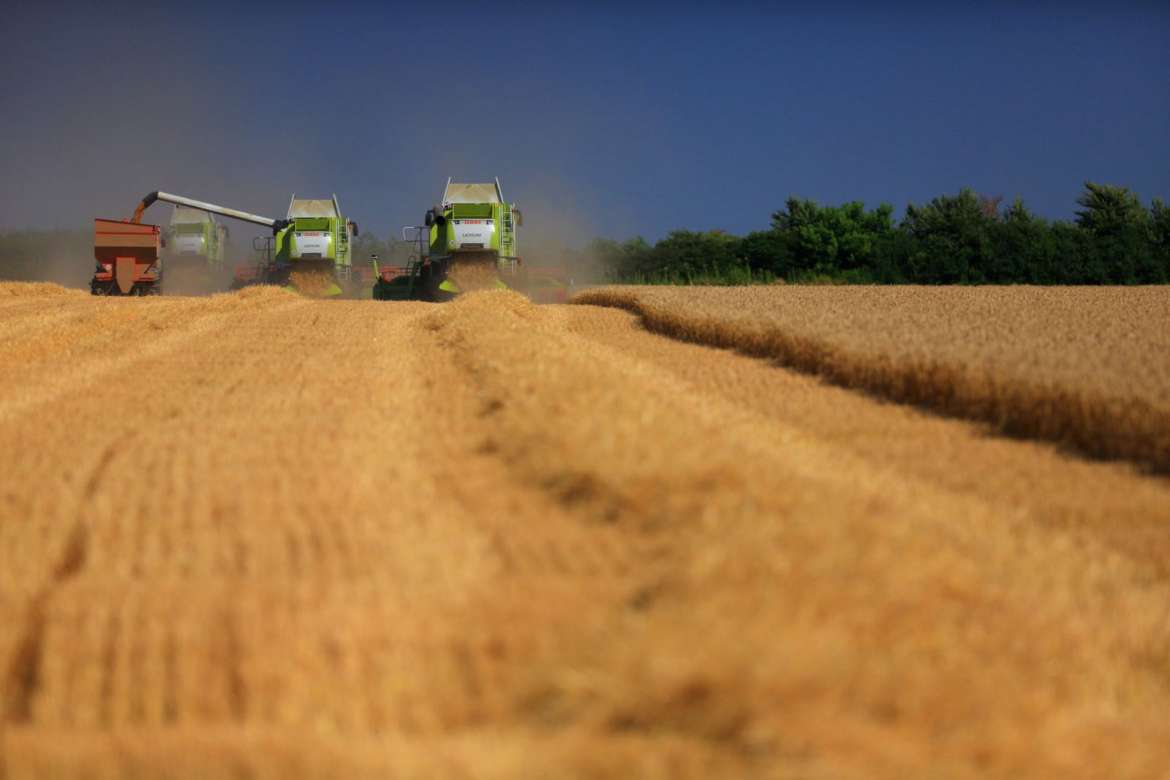 © Romulić & Stojčić
© Romulić & Stojčić
Croatia agriculture and food exports covered 69 percent of total imports this year, an increase of 8.11 percent. A total of 15.86 percent of all exports from the country come from the Croatia agriculture and food exports sector.
The most important item of production within the sector is corn, which accounts for 5.4 percent of all Croatia agriculture and food exports.
From January to September 2020, the most significant products in exports were: cereals (205.4 million Euros – a growth of a huge 62.6 million Euros); various food products (168.1 million Euros – including manufactured/processed foods like sauces, soups, ice cream, sugar products); fish and other seafood (a huge 147.4 million Euros – showing a growth of 14.5 million Euros); cereals, flour, starch or milk products; confectionery products, including chocolate (135.9 million Euros – a growth of 13.8 million Euros), and tobacco-related products (122.6 million Euros). TCN recently took a closer look at the successful and well-established Croatian chocolate industry
Other successes within 2020 Croatia agriculture and food exports were live animals, with an increase of 10.1 million Euros, and the residue and waste of the food industry, which is exported to go into prepared animal foods. The latter saw an increase of 8.6 million Euros.
So far this year, Italy was one of the most important destinations for Croatia agriculture and food exports. Their total consumption of Croatia agriculture and food exports was 300.8 million Euros, which amounts to 17.76 percent of Croatia's exports in the sector. Croatia agriculture and food exports to Italy increased by 21.9 percent this year, while imports from Italy to Croatia in the same period was 263 million Euros, a decrease of 16.6 percent on 2019. This creates a surplus of 37.6 million Euros.
The most important Croatia agriculture and food exports to Italy are maize, wheat and soybeans, tobacco-related products, sea bass (brancin) and bream (orada).
For the last five years, Croatia agriculture and food exports top consumer has been Germany. For the past seven years, Germany has also been the country from which Croatia has imported the most.
HBOR Loans Provided to Croatian Farmers with 0.5% Interest
As Zlatko Simic/Novac writes on the 18th of December, 2020, joint cooperation between the Ministry of Agriculture and HBOR in the middle of this year introduced a new financial instrument called ''Working capital for rural development" which provided favourable HBOR loans and funds for lending liquidity to Croatian farmers and processors of agricultural products, as well as entities operating in the forestry sector affected by the ongoing pandemic.
Business difficulties caused by the coronavirus epidemic are proven by one of the ten criteria, including reduced demand or the possibility of product placement, an increase in production costs or the inability to carry out agro-technical measures in a timely manner.
Working capital HBOR loans are approved directly at an interest rate of 0.5 percent, and loan users are exempt from all fees normally charged when approving loans.
Documentation needed for this HBOR loans
The loan amount can be from 190 thousand to 1.52 million kuna, the funds have been approved for a period of up to five years, including a grace period of up to 12 months.
Applications for these HBOR loans can be submitted by entities registered as family farms (OPG) in the VAT system, a trade (obrt) registered to perform an agricultural activity, a company or cooperative, including producer organisations. The documentation required for processing can also be submitted electronically, and the processing of loan applications is further simplified and accelerated.
HBOR loans can be used for working capital required for the smooth running of production and financing of current operations (the preparation of production, the purchase of raw materials, other production costs, labour costs, the settlement of trade payables and other general operating expenses).
These HBOR loans will also be available in 2021
Existing credit liabilities to commercial banks and other financial institutions cannot be settled with these funds.
The total amount of funds intended for these loans is 130 million kuna, and so far, HBOR loans in the amount of more than 70 million kuna have been approved. The funds will continue to be available during 2021, and interested beneficiaries can still apply for a loan that they can use, for example, to finance spring sowing or planting, production and processing.
For the latest travel info, bookmark our main travel info article, which is updated daily.
Read the Croatian Travel Update in your language - now available in 24 languages


